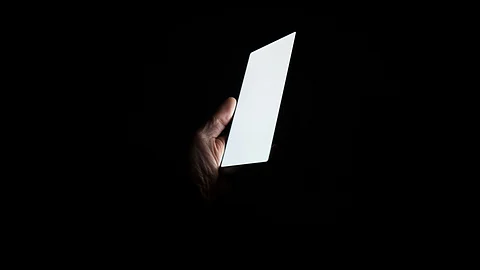

As children are increasingly exposed to screens from an early age, a recent study conducted on rats suggests that prolonged exposure to blue light, such as that emitted by smartphones and tablets, might lead to early puberty. The findings, presented at the 62nd Annual European Society for Paediatric Endocrinology Meeting in Liverpool, indicate a link between blue light exposure and accelerated bone growth and bone age, which could contribute to early onset puberty.
"This is the first study to show how blue light could potentially influence physical growth and development," said lead researcher Dr. Aylin Ugurlu from Gazi University, Turkey. While these findings provide valuable insights, Ugurlu emphasized the need for caution when interpreting the results, as the study was conducted on rats.
"We cannot be sure that these findings would be replicated in children, but our data suggest that prolonged exposure to blue light accelerates both physical growth and maturation of the growth plate, leading to early puberty," she explained.
Prolonged exposure to blue light accelerates both physical growth and maturation of the growth plate
Dr. Aylin Ugurlu
Children’s growth involves the elongation of long bones, such as the femur, at each end. This process continues until the growth plates solidify, marking the end of height increase. Typically, girls stop growing between the ages of 14 and 16, while boys finish their growth between 16 and 18.
However, recent studies have reported a rise in early puberty among children, characterized by a rapid initial growth spurt followed by an earlier-than-usual cessation of growth. This trend could result in shorter adult height. Dr. Ugurlu noted that increased exposure to blue light from devices might be a contributing factor to this phenomenon.
The research team conducted an experiment on 36 rats, evenly divided by sex. Starting at 21 days old, the rats were exposed to one of three conditions: a normal light cycle, six hours of blue light exposure, or 12 hours of blue light exposure. The team observed the rats until the first signs of puberty emerged.
The researchers measured the rats’ overall length and femur growth, finding that those exposed to blue light experienced faster growth, particularly in their bones. "This means their bones matured too soon, which could potentially cause them to be shorter than average as adults," Dr. Ugurlu explained.
These findings indicate that prolonged blue light exposure might accelerate growth plate maturation and pubertal development. While the study provides significant evidence of the effects of blue light in rats, more research is necessary to determine if similar effects occur in humans.
This means their bones matured too soon, which could potentially cause them to be shorter than average as adults
Dr. Aylin Ugurlu
The study raises important questions about the potential risks of excessive screen time on children’s growth and development. Modern lifestyles, characterized by widespread use of smartphones, tablets, and other blue light-emitting devices, have increased children’s exposure to screens from a young age.
Although the research was conducted in animals, the implications for human health warrant further investigation. Early puberty in children can have long-term effects on physical and emotional well-being. Additionally, the association between accelerated growth and shorter adult height underscores the need for caution regarding excessive screen exposure.
The study’s findings open avenues for further research into the impact of blue light on children’s growth and development. It highlights the importance of understanding how modern technologies may influence biological processes, particularly during critical growth periods.
As concerns about the effects of screen time continue to grow, this research underscores the need for balanced screen use and preventive measures to safeguard children’s health. Parents and caregivers are encouraged to monitor screen time and create environments that minimize unnecessary exposure to blue light.
"This study is just the beginning," said Dr. Ugurlu, emphasizing the need for more robust studies to explore the relationship between blue light exposure and growth in humans. The findings serve as a timely reminder of the potential unintended consequences of technology on health, particularly for vulnerable populations such as children.
By addressing these questions, future research can provide clearer guidelines and strategies to mitigate the risks associated with prolonged blue light exposure, ensuring healthier outcomes for children in the digital age.
Reference:
1. Bioscientifica Ltd. "Excessive Screen Time Linked to Early Puberty and Accelerated Bone Growth." EurekAlert!, November 15, 2024. Accessed November 16, 2024. https://www.eurekalert.org/news-releases/1064860.
(Input from various sources)
(Rehash/Yash Kamble/MSM)
